/ Genesis and assumptions.
A multi-level platform and application for managing the ski stations informations
A multi-level platform for managing the ski stations informations The main assumption of the SkiOS product is to enable the ski stations in the region to collect up-to-date data on the status of their infrastructure. Which can then be made available through various information channels (internet, media, advertising screens, external third party services) to tourists visiting the mountain region.
The product included:
- A multi-level platform managing the entire infrastructure of the ski station (ski lifts, routes, weather stations, machines, gates, employees, service technicians).
- A mobile application for station employees to supplement up-to-date infrastructure data and respond to current incidents in the mountains.
- A mechanism within the platform for people managing information about the region and enabling moderation of content leaving the station to end users.
- Builder for generating fully configurable widgets with information about the region, not only in terms of displayed information and the appearance of the interface.
- Marketing and information tools that allowed the creation of advertised campaigns, sending information or warning alerts regarding safety in the entire mountain region.
- On-site information and advertising applications in the form of interactive kiosks and passive screens.
/ SKIOS SYSTEM
The process of designing a product
/ Think — Discovery Stage
We started designing the SkiOS product for the ski industry with a series of meetings involving representatives of the Tatry Super Ski group, which is responsible for uniting ski resorts and tourist spots in the Tatra region into one promotional group. At that point, a general need for a new product emerged along with initial assumptions about its shape.
To deepen our understanding of the idea and identify problems and needs, we organized a series of design workshops with the TSS group. Representatives of selected ski resorts and tourist destinations also participated in the workshops. During these meetings, we jointly defined business and product goals, identified key problems to solve, and defined target user groups for the solution. The Business Model Canvas helped us organize knowledge and formulate assumptions. Additionally, to better address our clients’ needs, we developed the Value Proposition Canvas, which helped us describe their needs, expectations, and concerns in detail. In the workshops, we also established what our product should be and what it should not be.
During the workshops, we identified the main problem: the need to inform tourists about the current situation and conditions at ski resorts and tourist destinations, not only during the winter season but throughout the year. An additional challenge was developing a method for acquiring, collecting, and processing this information on the side of the resorts and tourist spots, including the channels through which this information would be shared.
In the process of defining the target group, we prepared descriptions of the main user segments divided by the roles they would play in the system. We conducted segmentation using detailed personas, which allowed us to organize knowledge about users clearly, taking into account the problems and needs of each segment. Sample segments included ski resort employees (machine operators, inspectors), managers of the resorts, and tourists.
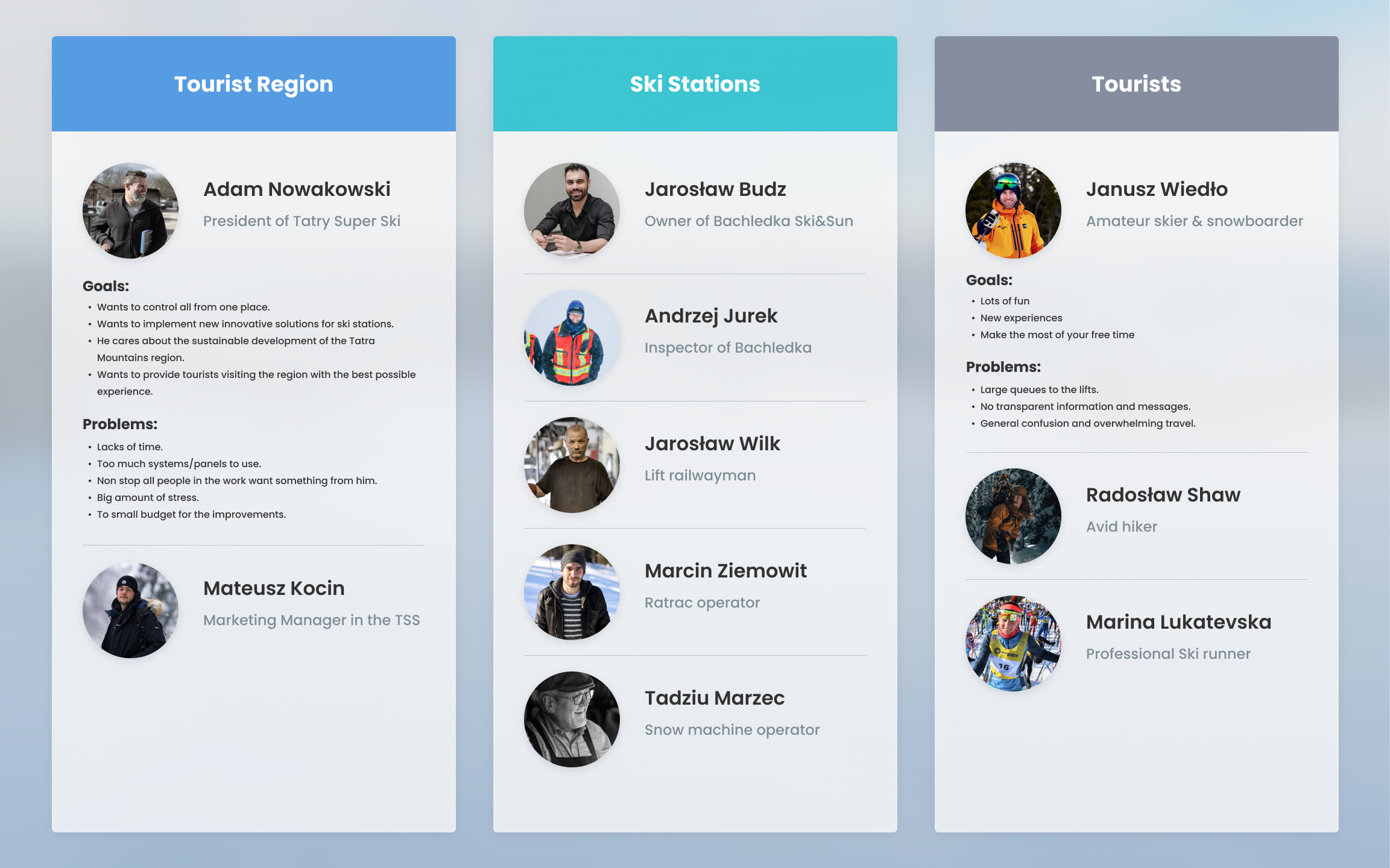
/ Discover — Research.
To deepen knowledge and verify assumptions developed during the workshops, I designed two related qualitative studies: in-depth interviews (IDIs) and field studies.
The IDIs were conducted with representatives of selected user segments: ski resort employees, managers, and tourists. We conducted around five interviews per segment. The biggest challenge was recruiting participants, which was aided by our client’s contacts with selected resorts. Each user group had an individual interview script tailored to the specifics of their role.
The interviews validated assumptions about the users and provided a clear picture of their daily problems and needs. These studies yielded many valuable insights regarding the operation of ski resorts and helped us better understand the expectations of tourists visiting the Tatra region.
The second related study was field research in the form of service safari. As the lead researcher, I took on the role of an observer and accompanied employees of selected ski resorts in their daily tasks—from machine operators to managers. For the study, I prepared a scenario with general questions for each role and a list of topics to explore deeper to better understand their work. Participating in employees’ daily duties gave me a real view of their challenges. Conversations with employees helped identify numerous problems our product could solve and provided insights into difficulties tourists face.
/ Think — discover stage
After completing the research, I analyzed the collected data and prepared reports, organizing conclusions and insights on Miro boards. This helped highlight the most important information: problems, needs, and user motivations identified during the interviews. Then, together with the business team, we updated the Business Model Canvas and Value Proposition Canvas models and the previously prepared user segments.
The information from this stage gave us a real picture of the challenges and needs of our future users, enabling us to better tailor the product to expectations and clearly define the goals we aimed to achieve. The next step was conducting an analysis of market solutions in management systems. The research covered direct and indirect competitors, as well as solutions outside the ski industry—both paid and free. This allowed us to identify functionalities to avoid and those worth considering in our product. The analysis also helped pinpoint niches our product could fill.
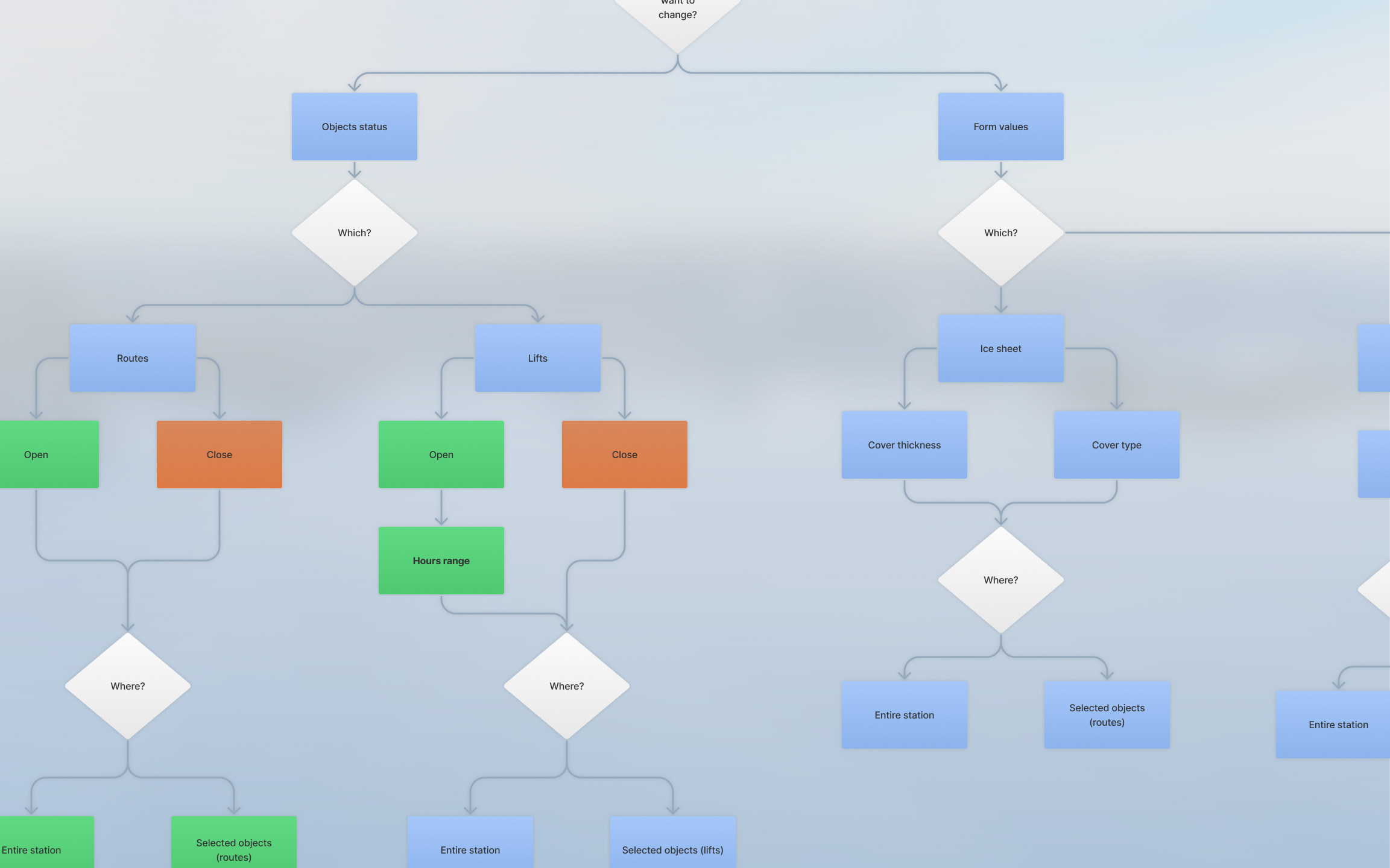
/ Make — Ideation stage
Next, together with the business-technical team, we held brainstorming workshops where we developed a set of functionalities addressing the identified problems. Creating features for the platform and application was based on research reports and conclusions from the design workshops. The creative sessions were the starting point for detailed functional descriptions.
Also of great help in working on product functionalities was the Opportunity Solution Tree tool, which we used during the workshop to create a functionality map.
At this stage, the concept of three main product components emerged: a platform for managing information at ski resorts, a widget creator with information for tourists adapted to various devices, and a mobile application used to collect information from tourist spots. To better illustrate how users would interact with the product, we prepared a set of User Stories for key platform and app functionalities.
Next, together with the business analyst, we created a list of required features that would meet specific user needs. Each feature was described in detail along with corresponding user stories, facilitating further design. I also developed descriptions of planned user roles in the system and application.
A very important step was prioritizing functionalities using the Priority Matrix tool. We ordered functions starting from the most critical ones addressing key problems, down to less important ones. Comparing the feature set with the budget helped us develop a consistent MVP concept. Many features were postponed to later stages due to budget constraints.
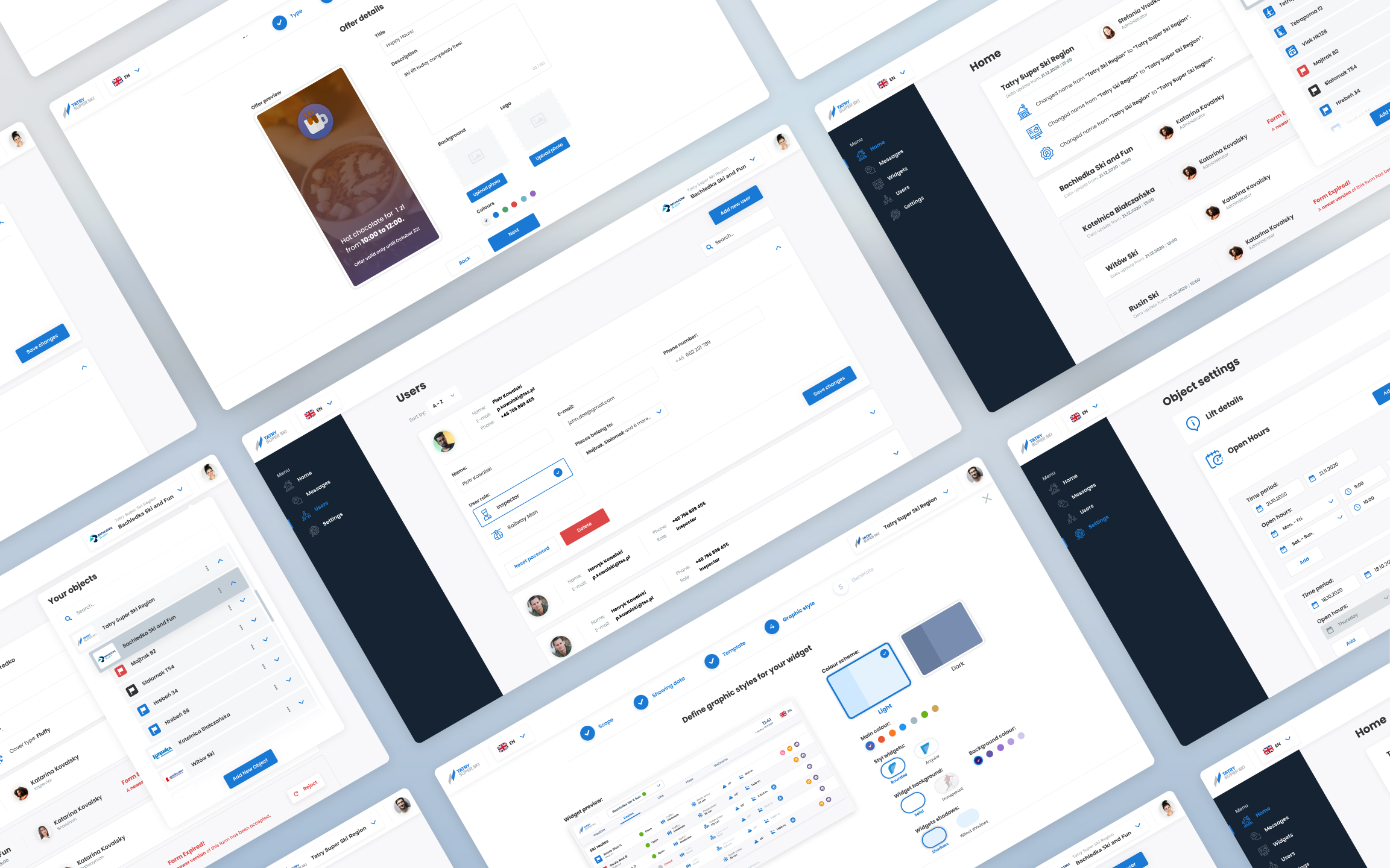
/ Make — Ideation stage
The next step was preparing user flows and user flow maps for the most important functionalities—first for the mobile app, then for the expanded platform. Designing user paths for the app was relatively straightforward due to its simplicity. It was more challenging with the platform, where the large number of features required painstaking work. For mapping complex diagrams, I used Miro, and simpler cases were created in FigJam.
A particularly difficult task was mapping the functionalities and object structure in the platform, including their interdependencies and smooth transitions between settings. For example, some objects were linked through settings, and statuses in one object influenced statuses in another. Documenting the structure took about two weeks of intensive work.
After preparing the diagrams, I began creating low-fidelity wireframes. I started designing screens for key features, first focusing on the general layout, then moving to more detailed views. The wireframes were based on previously prepared user flows, which sped up the work and ensured all use scenarios were covered. I did not start designing the final interface immediately, as with such a complex product it is easy to make mistakes, especially when focusing on visual details.
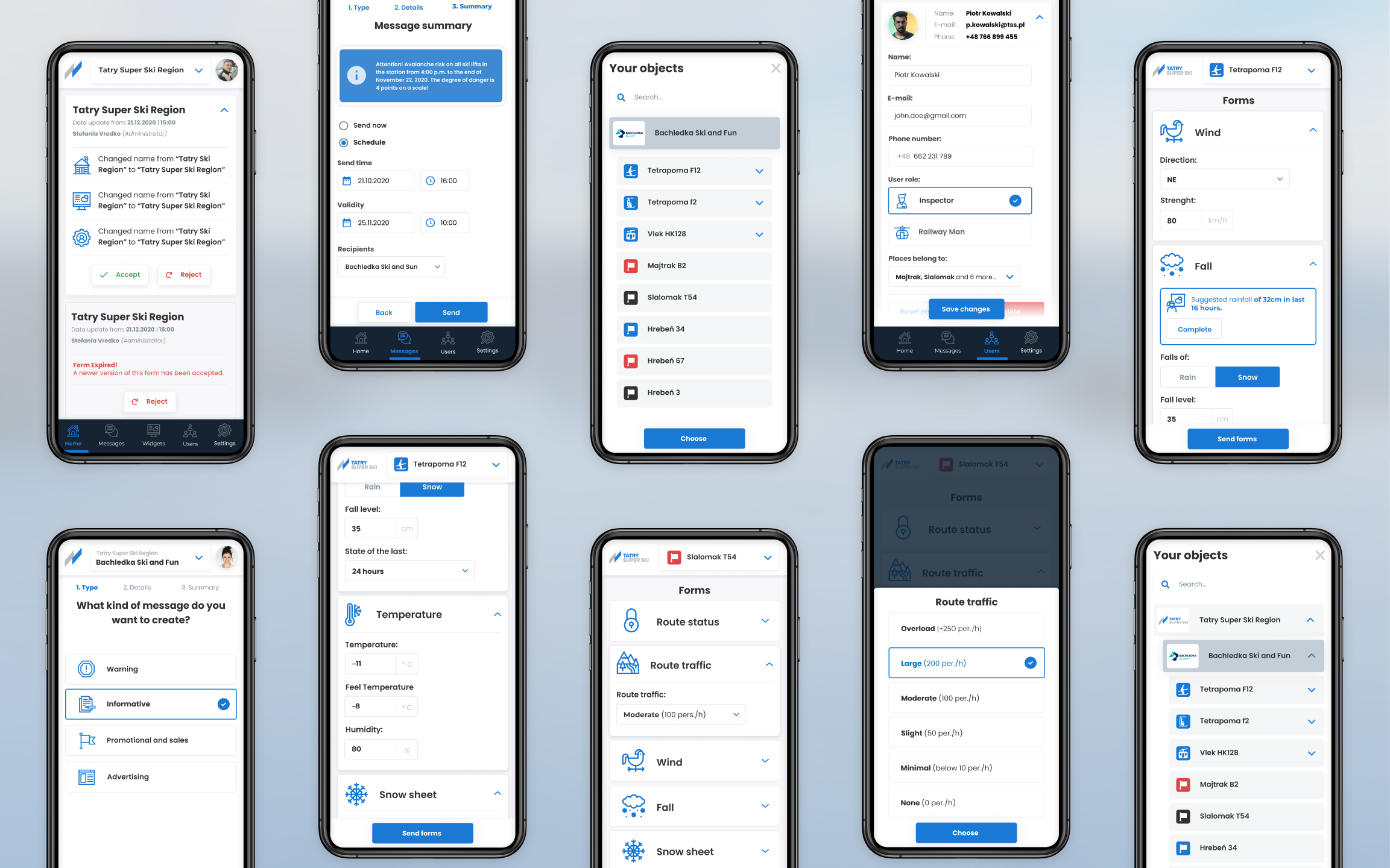
/ Make — implementation
The final stage was designing the final user interface. I started with desk research, analyzing available free component libraries and public design systems. This review allowed me to adopt best practices regarding UI components. For example, Material Design components proved very helpful in designing the mobile app for ski resort employees.
Next, I researched current trends in mobile and web app design using platforms like Dribbble, Behance, and Awwwards. The collected inspiration helped me develop a basic Style Guide based on the client’s branding and market trends, which became the foundation for the Design System in the form of tokens in Figma.
As with the low-fidelity wireframes, I began designing views starting with key functionalities, following the principle: from general to specific. During the design, new UI components were created, forming our local Design System. The design was closely based on previous wireframes and user flows, which significantly accelerated the work. Components were documented directly in Figma to enable reuse in future iterations.
Creating the component library was integrated with the developer team’s work, who simultaneously built their front-end library to speed up future product development.
High-Fidelity wireframes were designed according to the implementation roadmap. Each functionality was handed over to developers in consecutive sprints. After each sprint, I actively collaborated with programmers, delivering views and explaining how interface elements worked—such as transitions, animations, responsiveness, and interactivity.
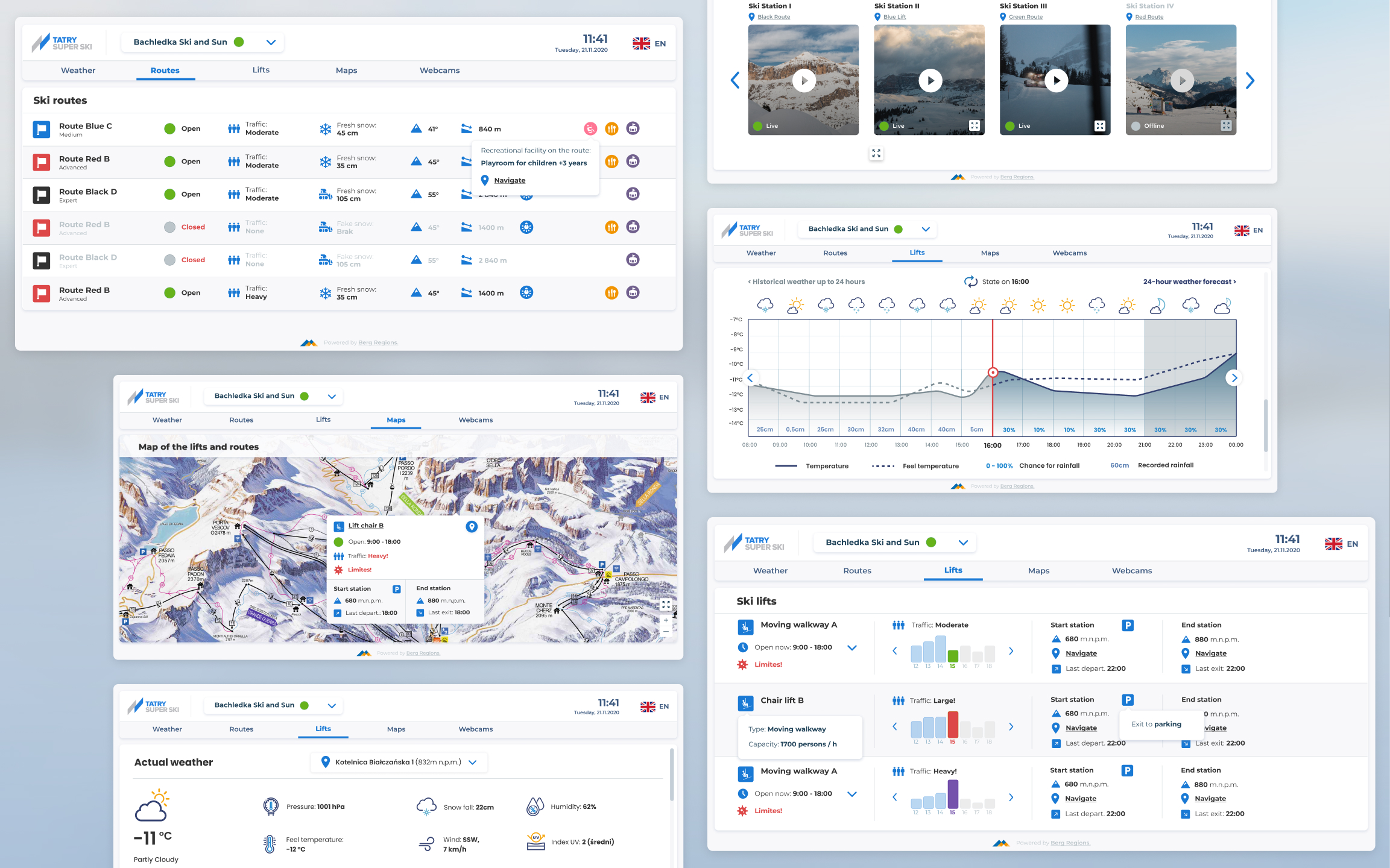
/ Learn — Delivery Stage
After deploying the MVP platform and mobile app, we started internal system testing, in which I actively participated. These tests identified many bugs and issues that we could quickly fix before releasing the product to initial users.
The next step was launching the platform for selected clients. They gained access to basic system functions—information management and widget generation. To facilitate user onboarding, I prepared a set of PDF instructions and video recordings demonstrating how to use key functionalities.
Within a few weeks, we began receiving initial feedback from clients, including bug reports and remarks about system performance. To streamline handling, we implemented a ticketing system. Reports were categorized, assigned to responsible people, and forwarded to the development team.
Due to budget constraints and business reserves, full usability testing of the entire system was not possible. We conducted only usability tests for the mobile app used to collect data on ski resort conditions. These studies identified several significant usability issues that were fixed in subsequent product iterations.
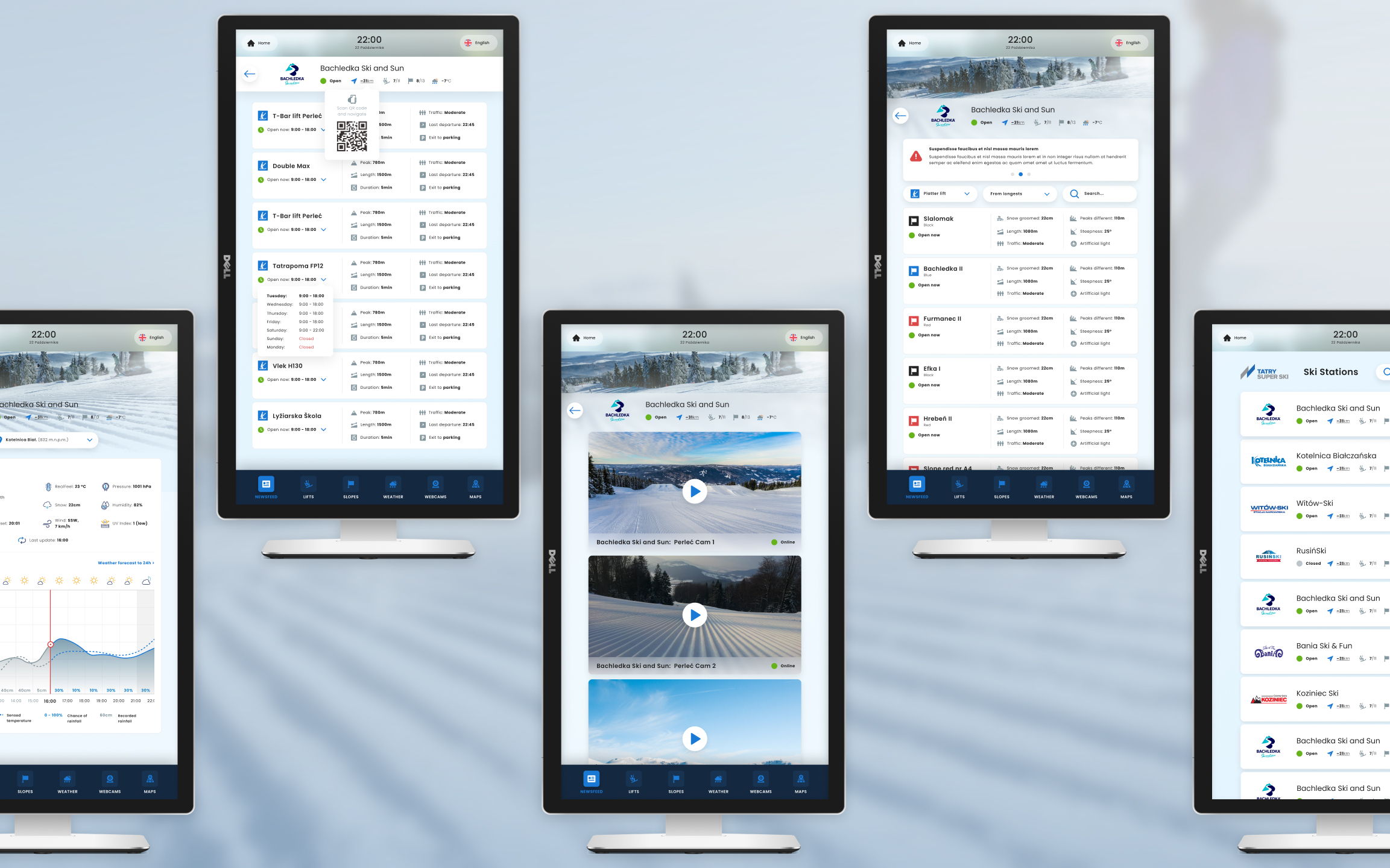
/ Learn — Main problems
Despite a broad discovery phase and defining the main platform assumptions, there was pressure from the business side to implement features that did not address real user needs. As a result, a significant portion of resources was spent on developing solutions that did not bring value to end users.
The lack of full usability testing for the web platform and widget generator meant many critical issues related to system handling were not detected. While some were caught during internal tests, others only surfaced in conversations with clients. Users reported difficulties, such as the inability to operate the widget using only a keyboard.
Integrations with external data providers were also a serious challenge. Many of these companies made changes to their systems without prior notice, causing interruptions in our platform or temporary unavailability of some features for end users.
The implementation process was problematic as well. The lack of dedicated project management staff resulted in organizational chaos: users received underdeveloped features, and the development team sometimes focused on fixing secondary bugs while neglecting key ones.
Despite two rounds of qualitative research and well-conducted discovery, not all user-side limitations were identified. For example, some ski resort employees lacked access to suitable devices to use the mobile app. This significantly complicated the solution’s deployment in some locations.
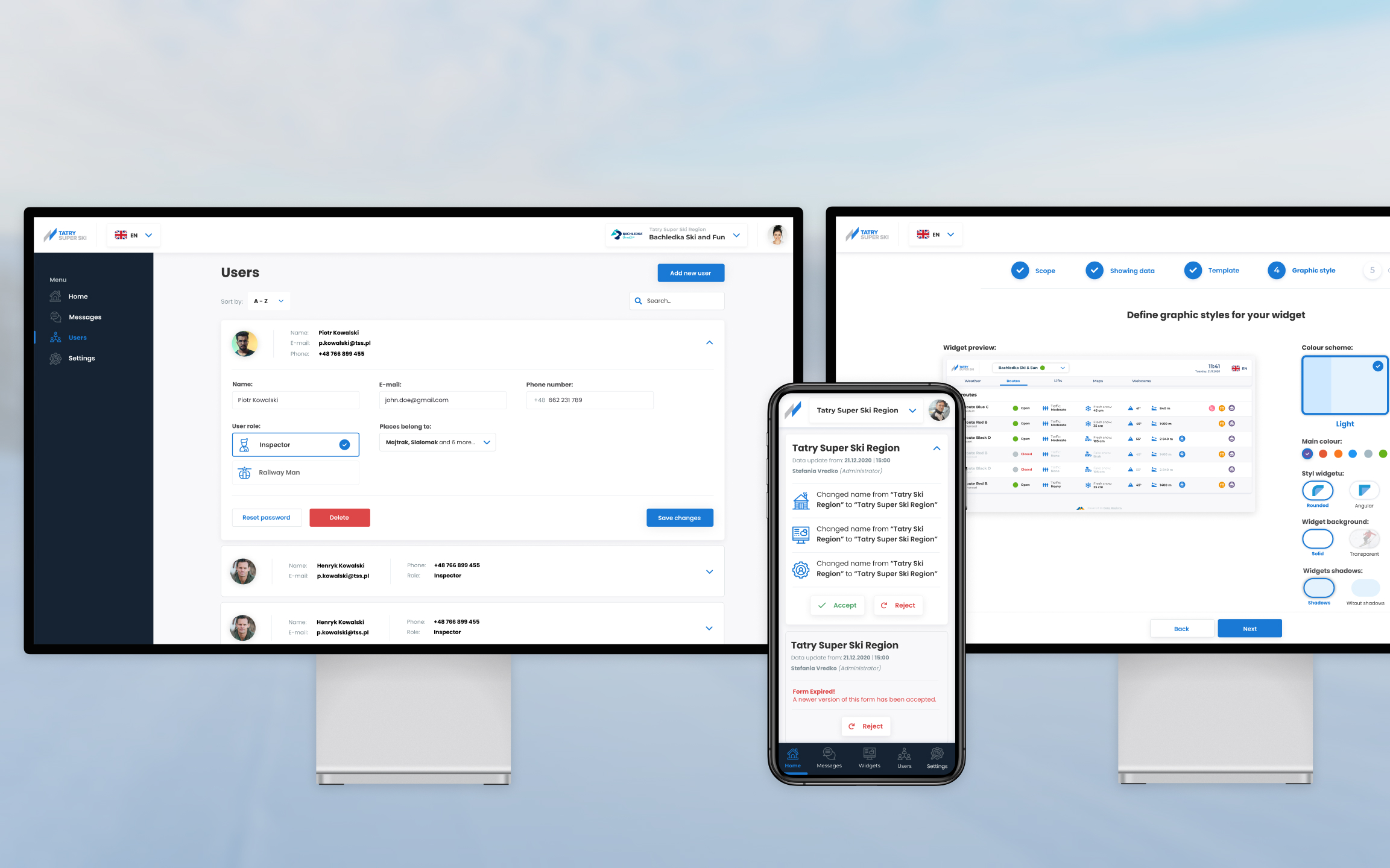
/ Learn — Summary
The SkiOS project was a valuable experience for me, revealing how complex and multifaceted the process of designing and implementing a digital system can be in an industry characterized by strong seasonality and specific operational conditions.
From a UX design perspective, I learned:
- The importance of consistency in the research process and validating hypotheses at various stages of the project. Despite a well-planned discovery phase and two rounds of qualitative research, the lack of usability testing for parts of the system impacted the final user experience.
- The critical role of communication and collaboration with the business team. Pressure to implement features not based on real user needs can lead to resource wastage and decreased product quality.
- The significance of thorough documentation and onboarding support for users. Well-prepared instructions and video materials greatly facilitated client onboarding and reduced the volume of support inquiries.
- The value of flexibility in the design process. Facing technical, staffing, and budget constraints, I had to continuously adapt UX processes to the team’s capabilities and project realities.
- This project strengthened my skills in working within an interdisciplinary team, making design decisions under time pressure, and balancing user needs with stakeholder expectations. It also made me realize how crucial early planning of usability testing, prioritizing bug fixes, and considering the technological context of end users are.

